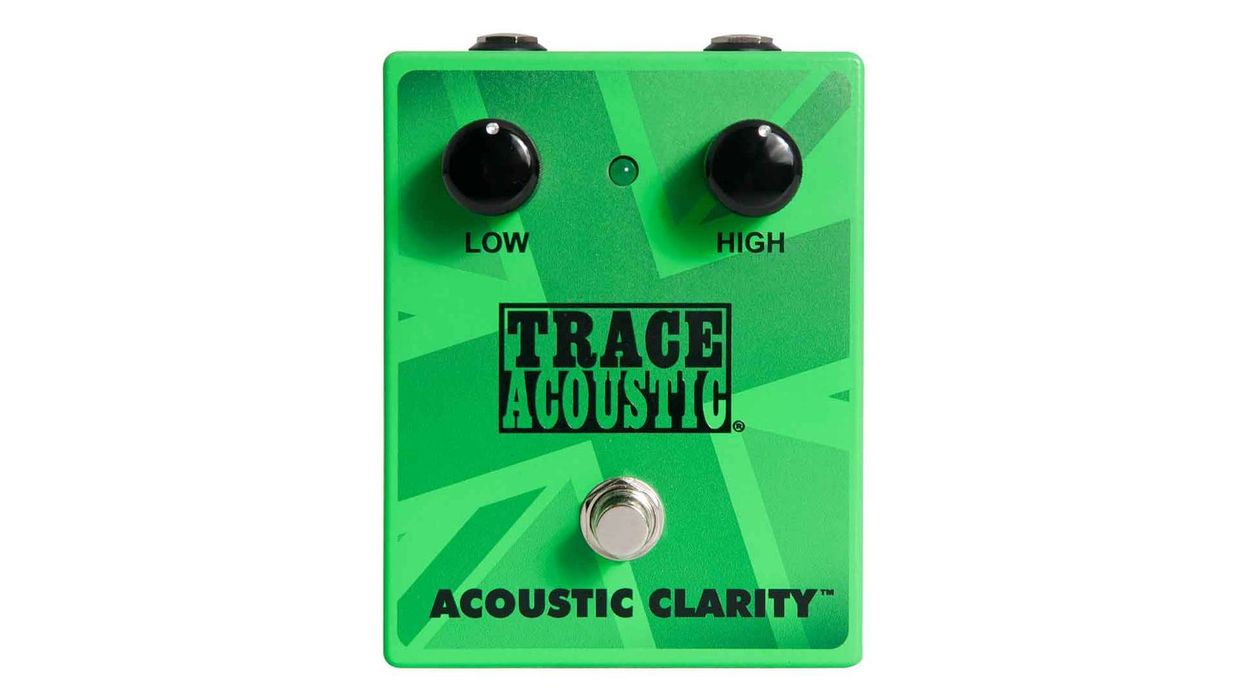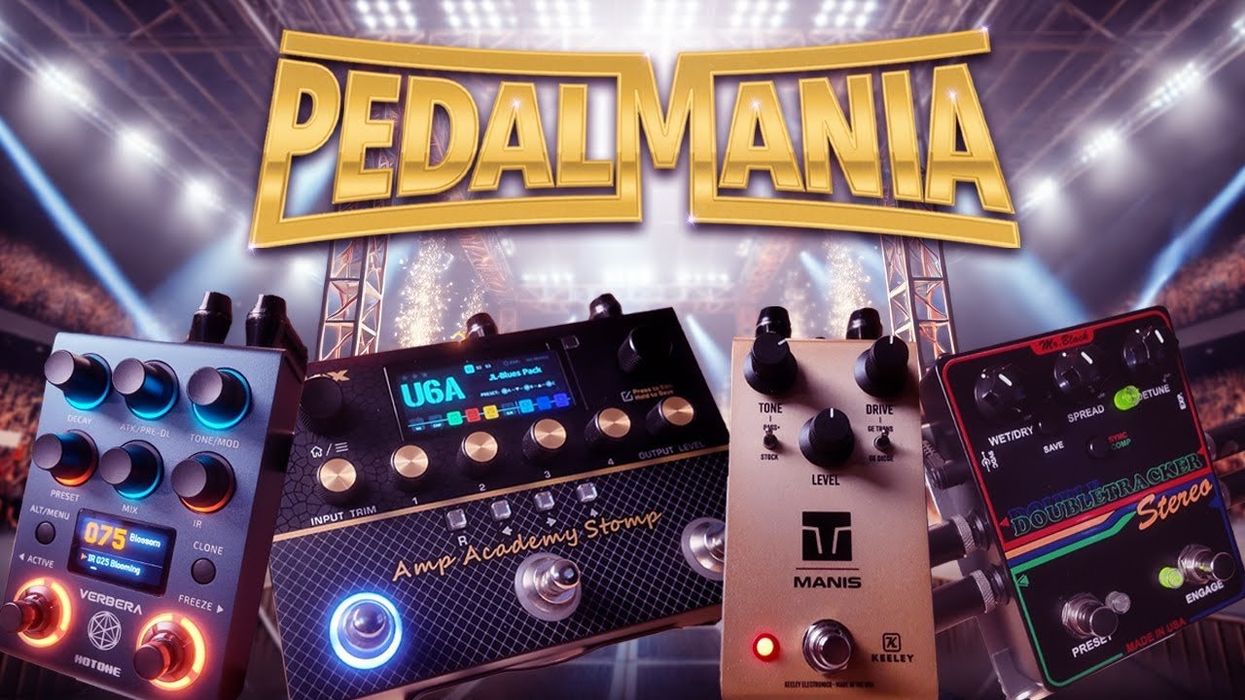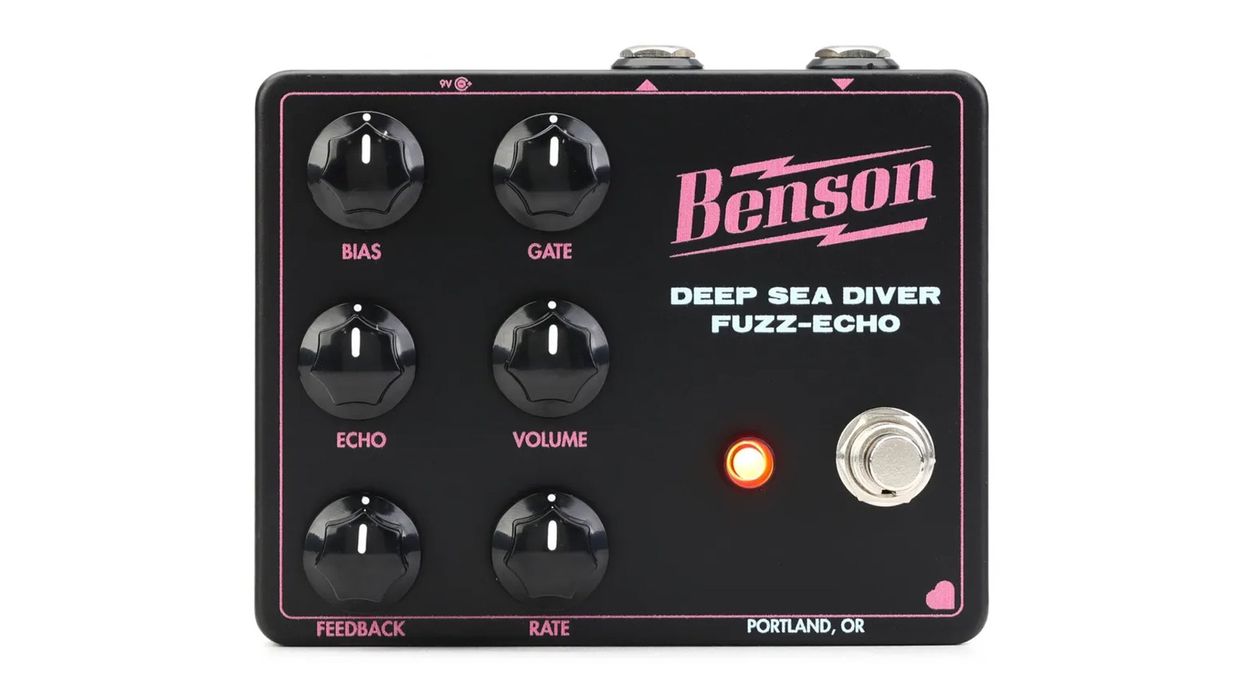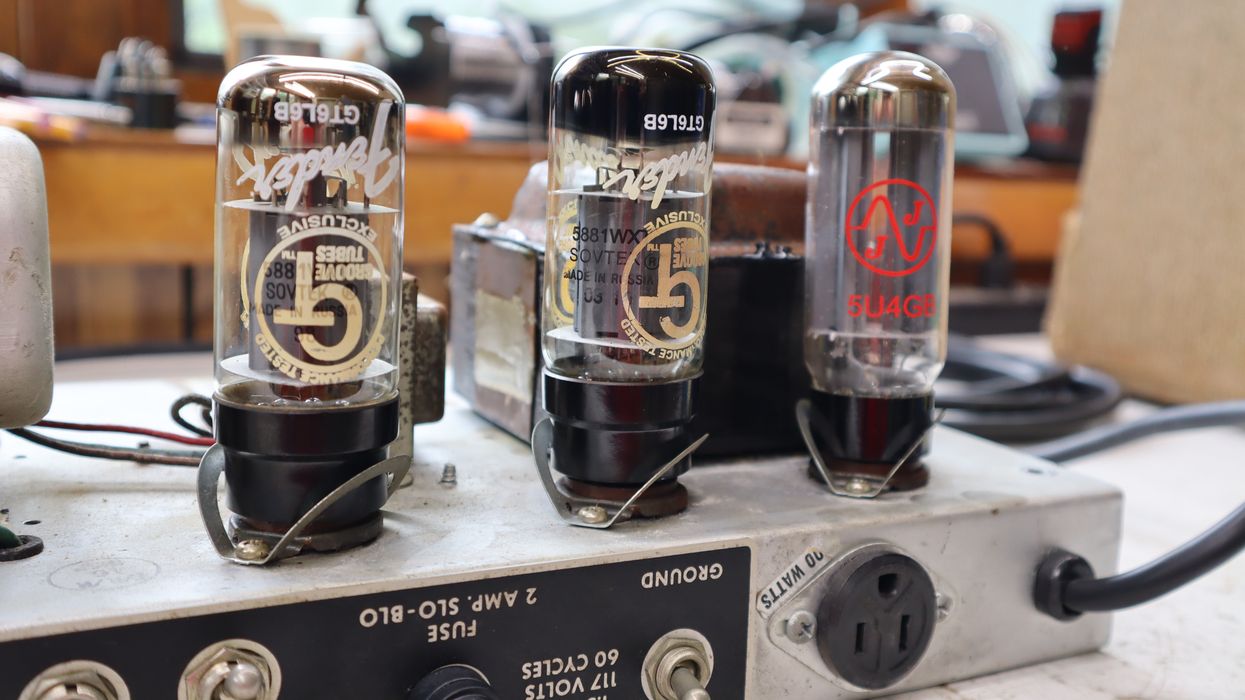What's with the cheeky name and graphics on Acorn Amplifiers' F#%k Face? Long story short: In 1989, the Fleer baseball-card company "accidentally" printed a short-lived card featuring Bill Ripken (Hall of Famer Cal Jr.'s less-known brother), hoisting a bat with "Fuck Face" scrawled on its butt. Besides being funny, the tie-in is that F#%k Face is inspired by the famous round 2-knob fuzz favored by Hendrix, Gilmour, and Eric Johnson—only it ups its progenitor's gain ante with three stages of filth courtesy of three 2N3904 silicon transistors.
I tested F#%k Face with a Stratocaster equipped with Fender Custom Shop '69 pickups, a Gibson '57 Classic-loaded Les Paul, a Tele with Curtis Novak single-coils, and an Eastwood Sidejack Baritone with Novak JM-WR pickups. Amps included a 1976 Fender Vibrolux Reverb, a KT66-driven Sound City SC30, a 6973-driven Goodsell Valpreaux 30, and a Fender Rumble 200.
Recorded into an Audient iD44 interface with no EQ-ing, compression, or effects.
Clip 1: Curtis Novak Tele-V bridge pickup into F#%k Face (level 4 o'clock, fuzz min) then a Sound City SC30 miked with a Royer R-121.
Clip 2: Curtis Novak JM-V neck pickup, then JM-V and Tele-V bridge,, then bridge position, into F#%k Face (level noon, fuzz min) then into a SoundBrut DrVa MkII, a Ground Control Tsukuyomi mid boost, an Anasounds Element reverb, and a Vibrolux Reverb miked with a Royer R-121.
Clip 3: Les Paul 57 Classic bridge pickup into F#%k Face (level 4 o'clock, fuzz min) then a Sound City SC30 miked with a Royer R-121.
Clip 4: Les Paul 57 Classic bridge pickup into F#%k Face (level moved from 10 o'clock to max, fuzz at max) then a Sound City SC30 miked with a Royer R-121.
Clip 5: Custom Shop '69 Strat bridge pickup into F#%k Face (level and fuzz at max) then into a SoundBrut DrVa MkII, a Ground Control Tsukuyomi mid boost, an Anasounds Element reverb, and a Fender Vibrolux Reverb miked with a Royer R-121 and a Fender Rumble 200 miked with an Audix D6.
Clip 6: Curtis Novak JM-WR bridge pickup into F#%k Face (level at 11 o'clock, fuzz at max) then into a SoundBrut DrVa MkII, a Ground Control Tsukuyomi mid boost, a Solidgoldfx Electrooman MkII, an Anasounds Element reverb, and a Fender Vibrolux Reverb miked with a Royer R-121 and a Fender Rumble 200 miked with an Audix D6.
Often Fat, Always Nasty
Cutting to the question undoubtedly at the fore of your own face, yes, F#%k Face is nasty. In many respects it reminds me of the vintage-Mosrite-inspired Jordan Fuzztite—a silicon-transistor unit with a switchable high-gain mode that's been my go-to fuzz for years. Both units furnish buzzy, Velcro-y tones that are categorically not for the faint of heart. Put another way: If you're looking for sweetly singing Jimi leads, F#%k Face will do exactly as its name says.
Despite its lack of an EQ control, F#%k Face's tone profile shifts a bit, depending (primarily) on where its level knob is set. Unity gain tends to be anywhere from 10 o'clock to noon, and from there to about 2 o'clock, tones are more mid-dominant, while past 2 it becomes increasingly corpulent and low-mid heavy. In general, lower fuzz-knob settings are thin and spitty (I like the wasp-in-a-tin-can metaphor), while increasing gain past noon simultaneously smooths out the sound, focuses frequencies in the low and low-mid range, and introduces huge, frothing, effortlessly infinite steroidal cello sustain.
If you're looking for sweetly singing Jimi leads, F#%k Face will do exactly as its name says.
At higher gain settings, there were many times when F#%k Face's riotous rotundity felt a little too indistinct and same-y in any pickup position other than the bridge. This might lead one to surmise F#%k Face is for doomy folks. And at extreme settings, many will certainly miss the cushy attack dynamics you typically get from neck or middle pickups. But there's enough interactivity between the pedal's controls, and a decent enough ability to clean things up with guitar-volume tweaks, that you can still get some in-between flavors. A silver lining to this apparent "limitation" is that F#%k Face sounds very consistent from guitar to guitar, regardless of pickup type.
The Verdict
If you're a fuzz deviant like I am, F#%k Face offers a lot to be intrigued by—especially in a stomp category where staid often seems to be the MO. My main wish while playing F#%k Face was that tone shifts were either a little more perceptible or more responsive to volume-knob tweaks at high gain settings. I loved that F#%k Face could make a Les Paul sound like an overloaded arcing Jacob's ladder. But sometimes the gain was so thick it was difficult to predict, rhythmically, how riffs or leads would come out the other end. (Granted, some might view that as a plus.) Interestingly, one of my favorite settings was fuzz at minimum and level at 3 or 4 o'clock, which—with my Tele volume down a tad and my Sound City SC30 dialed to a Vox-y recipe—yielded a responsive, bristlingly dynamic, and hyper-charged Kinks vibe.











![Rig Rundown: AFI [2025]](https://www.premierguitar.com/media-library/youtube.jpg?id=62064741&width=1245&height=700&quality=70&coordinates=0%2C0%2C0%2C0)





